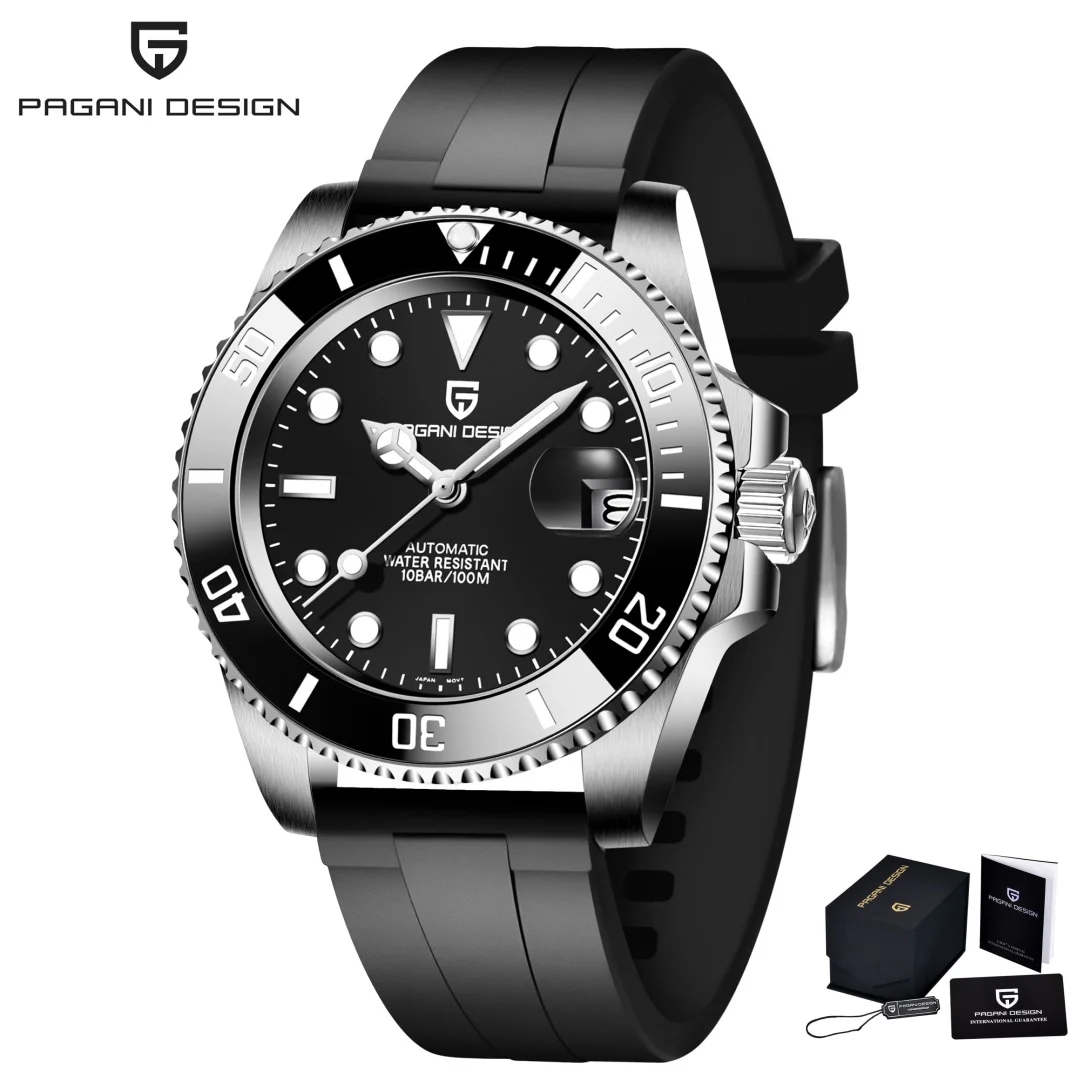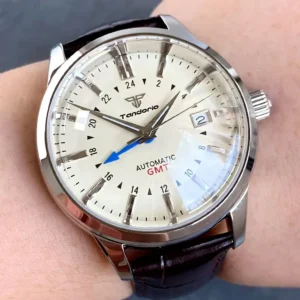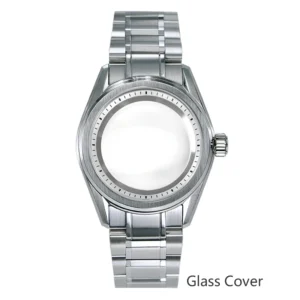The world of horology offers a fascinating intersection where two powerful watch complications meet: the robust functionality of dive watches and the global utility of GMT timekeeping. This combination creates timepieces that serve multiple roles while maintaining their integrity in demanding environments. Merging these two distinct functions presents unique engineering challenges that watchmakers have solved through various innovative approaches.
The growing popularity of dive-GMT watches reflects our increasingly connected world, where adventurers and professionals alike need tools that perform reliably across time zones and underwater. These specialized timepieces represent the perfect marriage of form and function, balancing technical requirements with practical usability.
In this exploration, we’ll decode what makes dive watches GMT-compatible, examining the technical requirements, ingenious design solutions, and practical applications that allow these two essential complications to coexist harmoniously in a single watch. Whether you’re a seasoned collector or simply curious about GMT functionality in dive watches, understanding this specialized category reveals the extraordinary engineering behind these versatile timepieces.
Understanding the Core Functions: Dive Watches vs. GMT Timepieces
Before diving into how these complications work together, we must first understand what makes each type of watch unique and the specific requirements they must fulfill. The challenge lies in integrating two systems that were originally designed for entirely different purposes, each with their own technical standards and operational needs.
GMT and dive watches differ significantly in their primary functions, yet both serve specific practical purposes that extend beyond mere timekeeping. When combined, they create a versatile tool that serves multiple needs while preserving the integrity of both functions.
The Essential Dive Watch: Purpose and Technical Requirements
A true dive watch isn’t just water-resistant—it’s a specialized instrument engineered to function reliably in the underwater environment. Meeting strict standards like ISO 6425, these watches must offer:
- Water resistance of at least 660 feet/200 meters
- A unidirectional rotating bezel with 60-minute markings
- High legibility underwater with contrasting colors
- Substantial luminosity (using materials like Super-LumiNova or LumiBrite)
- Resistance to magnetic fields and shocks
- Clear indication that the watch is running (usually via a luminous seconds hand)
The unidirectional bezel serves a critical safety function: if accidentally moved, it will only show that more time has elapsed, never less—preventing a diver from overestimating remaining air supply. This safety-first design principle is non-negotiable in genuine professional-spec dive watches.
The GMT Complication: Tracking Multiple Time Zones
GMT watches originated in the golden age of commercial aviation when pilots and travelers needed to track multiple time zones simultaneously. The defining feature is an additional hand that makes one full rotation every 24 hours, paired with a 24-hour scale.
This complication allows wearers to:
- Track a second time zone at a glance via the 24-hour GMT hand
- Differentiate between AM and PM hours in the second time zone
- With certain movements, track a third time zone using the rotating bezel
Unlike dive watch bezels, traditional GMT bezels are bidirectional for quicker adjustments and typically feature a 24-hour scale instead of elapsed minutes. The collection of GMT automatic watches shows various implementations of this functionality, from classic dual-tone bezels to more elaborate designs with fixed 24-hour scales.
The Engineering Challenge: Movement Considerations
The foundation of any GMT dive watch combination begins with the movement. Creating a watch that successfully combines both functions requires a specialized movement capable of powering the additional GMT hand while maintaining the reliability needed for dive timing.
The movement must accommodate the additional GMT hand while ensuring precise timekeeping under various conditions, including pressure changes experienced during diving. This necessitates robust construction beyond what’s found in standard three-hand movements.
Understanding GMT complications reveals that adding this functionality increases the movement’s complexity, requiring additional gearing and often a modified mainplate to accommodate the extra mechanics. This complexity must be achieved without compromising water resistance or reliability.
True GMT vs. Caller GMT: Understanding Movement Types
GMT movements fall into two main categories, each offering different functionality and user experience:
True GMT (Traveler’s GMT):
* The local hour hand can be set independently in one-hour increments
* Allows travelers to quickly adjust to new time zones without stopping the watch
* Date changes with the local hour hand, making it more intuitive when traveling
* Typically found in higher-end watches with in-house movements
Caller GMT (Office GMT):
* The GMT hand is independently adjustable
* Keeps home time on the main hands while the GMT tracks a second zone
* More common in watches with modified base movements like the ETA 2893-2
* Often more affordable but requires stopping the watch to change local time
The choice between these movement types significantly impacts functionality and price point. Many dive-GMT watches use caller GMT movements like the ETA 2893-2, Sellita SW330, or Miyota 9075, which offer reliable performance while keeping costs manageable.
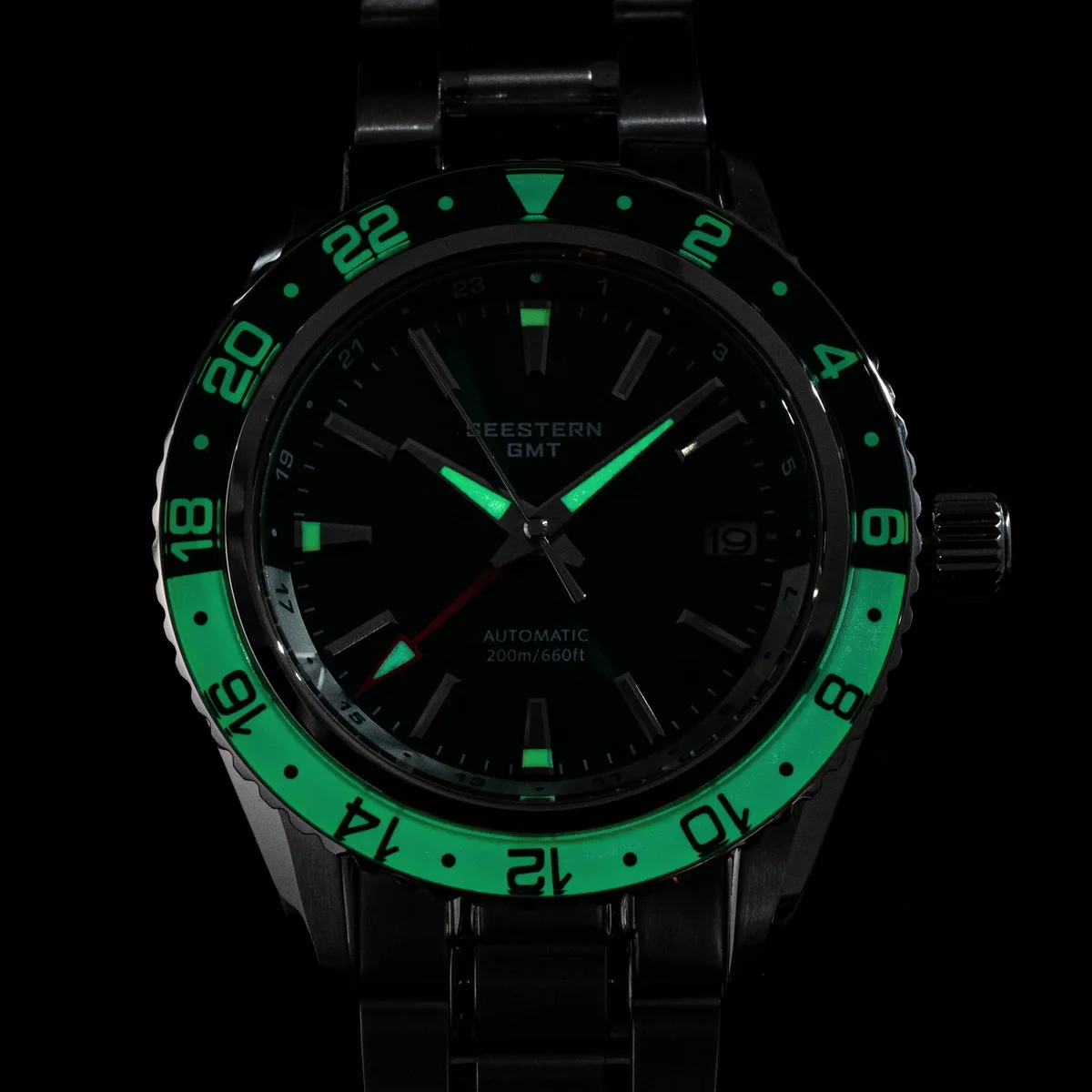
For those seeking the ultimate functionality in GMT dive watches, the true GMT movement offers the most convenient experience when traveling across time zones, though this typically comes with a higher price tag.
Design Solutions: Reconciling Dive and GMT Functions
The central design challenge in creating a dive-GMT watch lies in resolving the inherent conflict between a unidirectional 60-minute dive bezel and a bidirectional 24-hour GMT bezel. Watchmakers have developed several creative solutions to this dilemma, each with its own advantages and compromises.
Understanding the various GMT dive watch layouts reveals the ingenuity behind these designs. Each approach prioritizes certain aspects of functionality while finding ways to preserve the essential requirements of both complications.
Solution 1: The Dual-Purpose Bezel
Some manufacturers opt for a bezel that serves both dive timing and GMT functions simultaneously. These dual-purpose bezels typically feature:
- A primary 60-minute scale for dive timing
- 24-hour markings incorporated alongside or between the minute markings
- Distinct color coding (often blue/red “Pepsi” or black/blue “Batman” schemes) to differentiate day and night hours
- Unidirectional rotation to preserve dive timing safety
This approach maintains the watch’s profile without adding additional controls but creates a potential compromise: the bezel must be unidirectional for dive safety, which makes adjusting the GMT time more cumbersome, requiring full rotations to reach the desired position when adjusting backward.
Solution 2: Internal Rotating GMT Ring
An elegant solution that preserves both functions without compromise involves:
- Standard external unidirectional bezel for dive timing
- Internal rotating 24-hour ring controlled by a secondary crown (typically at 2 or 10 o’clock)
- Complete separation of the two timing systems
- Independent operation of both functions
This design maintains the safety aspect of the dive bezel while allowing bidirectional adjustment of the GMT scale. The trade-off comes in the form of case thickness, additional crown sealing requirements, and more complex operation. However, this solution offers the most faithful representation of both complications.
Solution 3: Fixed 24-Hour Scale on Dial or Rehaut
Perhaps the most straightforward approach:
- Standard unidirectional dive bezel remains unchanged
- Fixed 24-hour scale printed on the dial, chapter ring, or rehaut (inner bezel edge)
- GMT hand points to the fixed 24-hour scale
- No compromise to the dive bezel functionality
This design preserves the dive watch’s core functionality while adding GMT capability through dial design rather than mechanical complexity. The primary limitation is that the second time zone cannot be adjusted independently of the main time without moving the GMT hand itself, limiting the watch to tracking just two time zones rather than three.
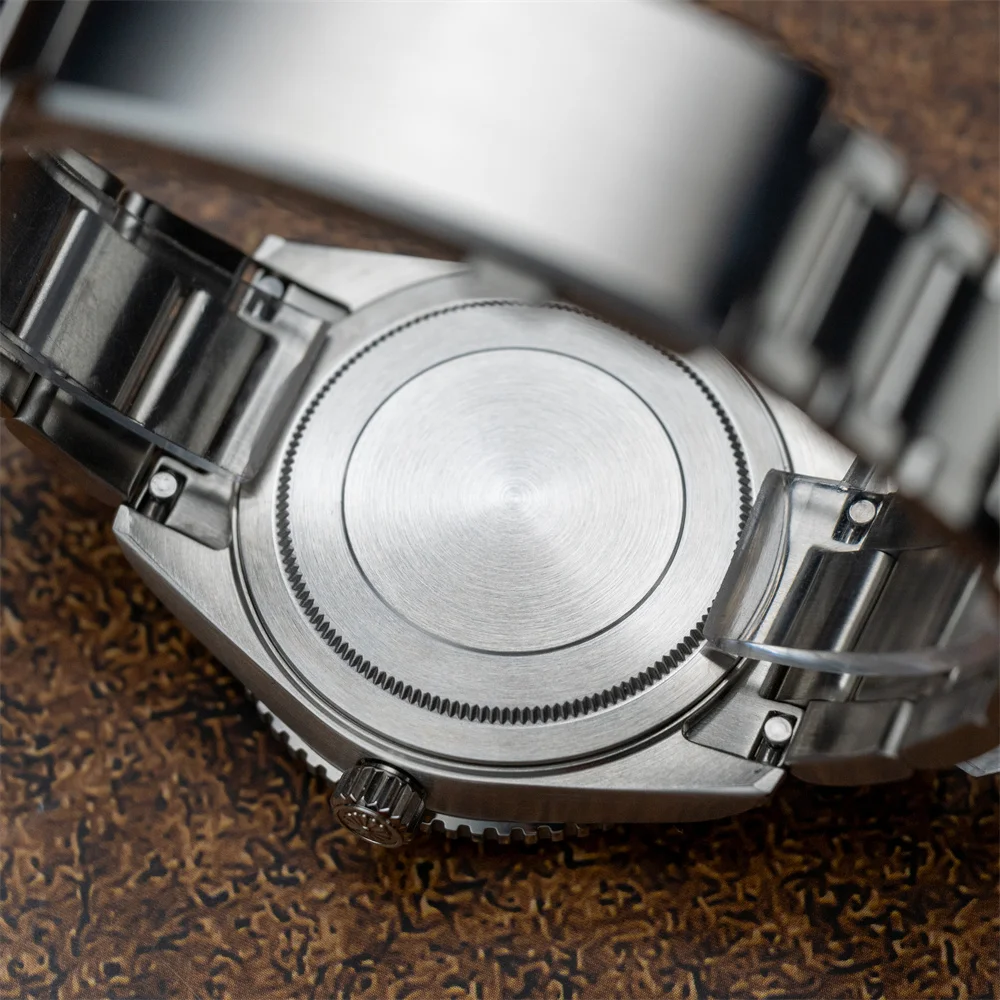
Many watch enthusiasts wonder if you can use a GMT watch for diving, and these design solutions demonstrate that with proper implementation, there’s no compromise to diving functionality when adding GMT capabilities.
Maintaining Dive Watch Integrity with GMT Functionality
Adding GMT functionality to a dive watch introduces additional complexity that could potentially compromise its performance underwater. Watchmakers must carefully address several key areas to maintain dive watch integrity.
The history of diving watch innovations shows that water resistance has always been paramount. With GMT functionality, this challenge increases due to potential additional entry points like secondary crowns. Manufacturers must ensure robust sealing systems that maintain water resistance despite the added complexity.
Case construction requires particular attention in these dual-purpose watches. The case must accommodate:
- Potentially thicker movements to house the GMT mechanism
- Additional gaskets and sealing for any secondary controls
- Reinforced crown tubes if additional crowns are present
- Sufficient thickness for pressure resistance
These requirements often result in GMT dive watches being slightly thicker than their standard counterparts, though advances in movement design continue to minimize this difference.
Preserving Legibility with Added Information
A critical aspect of dive watch design is instant legibility underwater, which becomes more challenging when adding GMT elements to the dial. Effective designs address this through:
- Distinct hand shapes that clearly differentiate the GMT hand from hour/minute hands
- Strategic use of color to visually separate different functions
- Careful application of luminous material to all critical elements, including the GMT hand
- Balanced dial design that prevents visual clutter
Successful GMT dive watches maintain their underwater legibility while incorporating the additional information, often through thoughtful color schemes and proportional hand designs that allow the brain to quickly filter and focus on the most relevant information for the current task.
Practical Applications: Who Benefits from a Dive GMT Watch?
The combination of dive and GMT capabilities serves specific users whose activities bridge multiple environments and time zones. Understanding these use cases helps appreciate why manufacturers continue to develop these specialized timepieces.
The practical applications of GMT dive watches extend to:
- Professional divers working internationally, who need to track local time and home base operations
- Military personnel deployed to maritime environments across different time zones
- Business travelers who enjoy recreational diving during international trips
- Maritime professionals like ship crew members, marine biologists, or oceanographers
- Enthusiasts seeking a versatile “one-watch solution” for both travel and water activities
For these users, the convenience of a single timepiece that performs reliably across environments outweighs any minor compromises in the integration of both functions.
How Leading Watchmakers Implement Dive GMT Functionality
Classic Automatic Dress Watches, GMT Automatic Watches, GMT Pilot Watches
Price range: $1,240.86 through $1,463.33 Select options This product has multiple variants. The options may be chosen on the product pageAutomatic Chronograph Watches, Classic Style Dive Watches
$3,053.06 Select options This product has multiple variants. The options may be chosen on the product pageBronze Automatic Watches, Military Inspired Automatic Watches, Professional Spec Dive Watches
Price range: $1,442.21 through $1,442.82 Select options This product has multiple variants. The options may be chosen on the product pageProfessional Spec Dive Watches, Titanium Automatic Watches
$574.74 Select options This product has multiple variants. The options may be chosen on the product pageClassic Automatic Dress Watches, GMT Automatic Watches, GMT Dive Watches
Price range: $468.93 through $552.94 Select options This product has multiple variants. The options may be chosen on the product pageGMT Automatic Watches, Unique Automatic Watches
$420.10 Select options This product has multiple variants. The options may be chosen on the product page
Different watchmakers approach the dive-GMT combination with varying priorities, resulting in distinct interpretations that emphasize certain aspects of functionality. Some brands prioritize the dive functionality with GMT as a secondary feature, while others give equal importance to both complications.
Premium manufacturers often develop proprietary solutions like:
- Integrated bezels with specialized click mechanisms that balance dive timing security with GMT adjustment convenience
- Unique movement architectures that optimize the relationship between hands for improved legibility
- Innovative use of materials and color coding for functional differentiation
- Advanced luminous technology that maintains legibility in all conditions
These implementations showcase how the technical challenge has spawned creative solutions that enhance both the functionality and aesthetic appeal of these specialized timepieces.
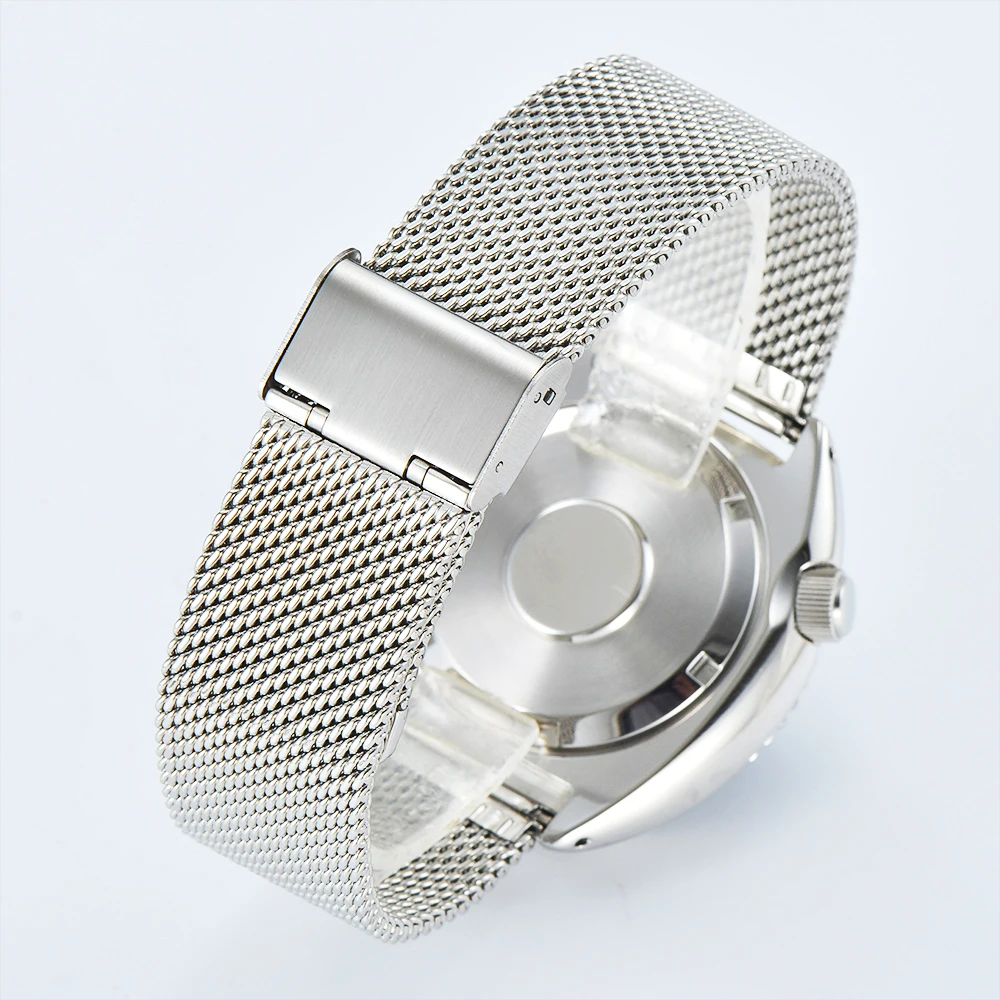
For those interested in traditional underwater timepieces, our collection of automatic dive watches includes various models with and without GMT functionality.
Is a Dive GMT Watch Right for You? Key Considerations
When evaluating whether a dive-GMT watch suits your needs, consider these key factors:
- Actual usage: Will you genuinely use both functions, or would a dedicated dive watch or GMT watch better serve your primary need?
- Movement preference: Do you need the convenience of a true GMT movement, or is a caller GMT sufficient for your travel patterns?
- Bezel priority: Is dive timing or time zone tracking more important to your daily activities?
- Size tolerance: Are you comfortable with the typically larger dimensions of these multi-functional watches?
- Budget considerations: Combining quality dive specifications with GMT functionality often commands a premium price
Understanding the advantages of GMT functions for divers can help determine if these benefits justify the investment for your specific needs.
Will a GMT Function Affect Dive Watch Performance?
A common concern among purists is whether adding GMT functionality compromises dive watch performance. When properly executed by reputable manufacturers, the GMT function should not negatively impact:
- Water resistance ratings, which remain consistent with dive watch standards
- Bezel operation and security for timing dives
- Luminosity and underwater legibility
- Shock and pressure resistance
The only notable compromise might be slightly increased case thickness in some designs, particularly those with internal rotating bezels controlled by secondary crowns. However, this rarely affects practical wearability or performance.
Modern manufacturing techniques and careful engineering have largely eliminated any significant performance trade-offs between standard dive watches and those with added GMT capability. Understanding GMT functionality on dive watches reveals that the primary differences are in operation rather than underwater performance.
Are Dive GMT Watches More Versatile Than Standard Dive Watches?
Dive watches with GMT functionality undoubtedly offer greater versatility across different situations than standard dive watches, particularly for travelers. This versatility manifests in several ways:
- Practical utility: The ability to track multiple time zones while maintaining dive timing capability
- Situational adaptability: Seamless transition from business travel to recreational activities
- Aesthetic versatility: Many GMT dive watches feature colorful accents that work well with both casual and formal attire
- Daily functionality: The GMT function provides practical utility even when not diving
For many enthusiasts, this versatility justifies any price premium over standard dive watches. The ability to own a single robust timepiece that performs multiple functions aligns with the growing preference for versatile, high-quality tools rather than multiple specialized items.
Those who appreciate classic styling might find our classic-style dive watches collection offers timeless designs with modern functionality.
In conclusion, what makes a dive watch GMT-compatible is a carefully orchestrated balance of specialized movements, innovative design solutions, and thoughtful implementation that preserves the integrity of both complications. The result is a versatile timepiece that represents the pinnacle of functional horology—a watch that truly earns its place on the wrist of the global adventurer.

